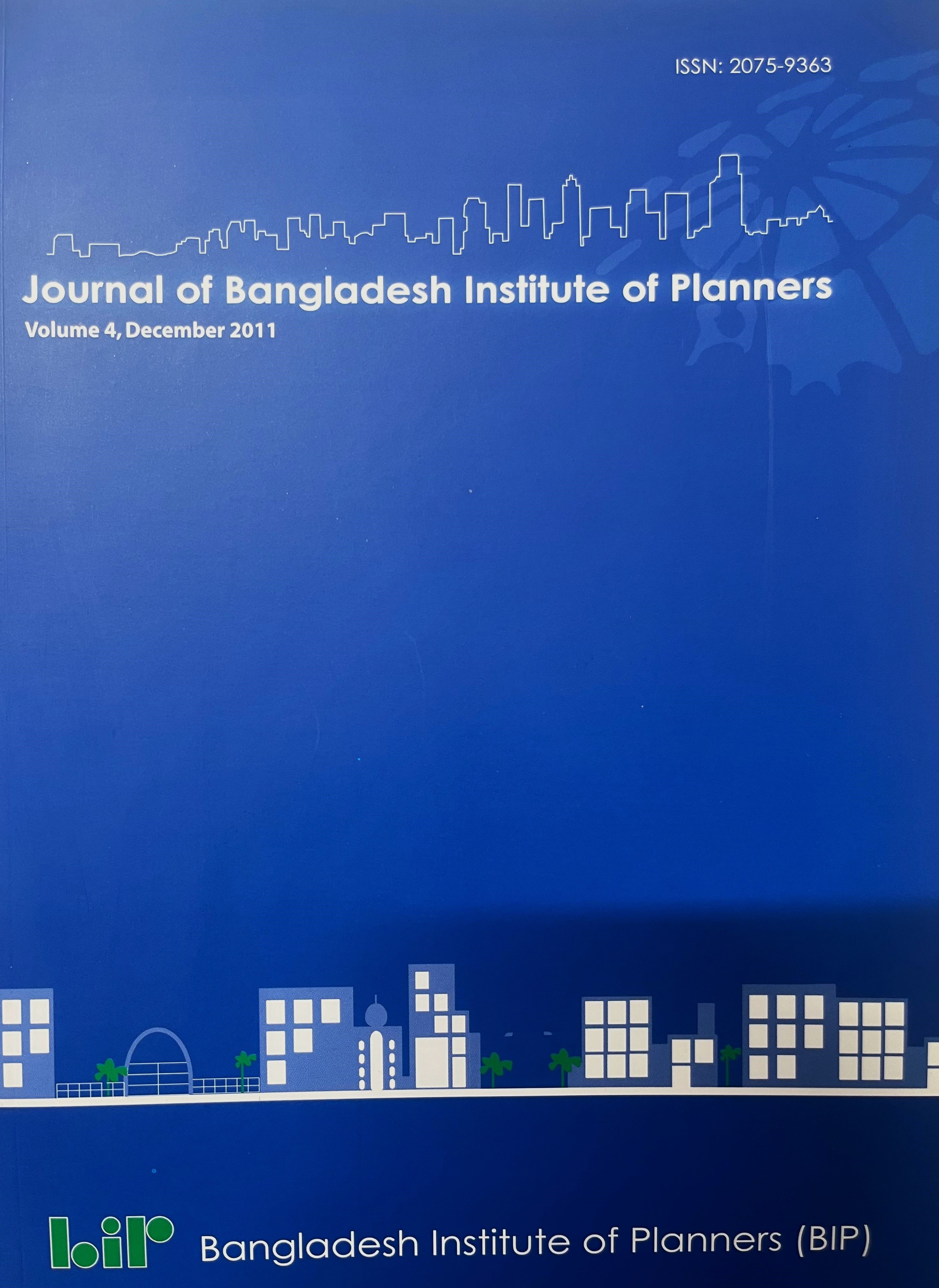Modelling Spatio-Temporal Urban Land Cover Growth Dynamics Using Remote Sensing and GIS Techniques: A Case Study of Khulna City
DOI:
https://doi.org/10.3329/jbip.v4i1.76734Keywords:
Land Cover, Remote Sensing, KhulnaAbstract
The primary objective of this paper is to predict and analyze the future urban growth of Khulna City using the Landsat satellite images of 1989, 1999 and 2009. Khulna City Corporation (KCC) and its surrounding impact areas have been selected as the study area. At the beginning, a fisher supervised classification method has been applied to prepare the base maps with five broad land cover classes. In the next stage, three different models have been implemented to simulate the land cover map of Khulna City of 2009. These are named as 'Stochastic Markov (St_Markov)' model, 'Cellular Automata Markov (CA_Markov)' model and 'Multi Layer Perceptron Markov (MLP_Markov)' model. Then the best-fitted model has been selected based on various Kappa statistics values. This is how the 'Multi Layer Perceptron Markov (MLP_Markov)' model has been qualified as the most suitable model for this research. Lator, using the Mlp_Markov model, the land cover map of 2019 has been predicted. The MLP_Markov model shows that 33.3370 of the total study area will be converted into built up area in 2019.
Journal of Bangladesh Institute of Planners Vol. 4. Dec 2011, pp. 15 - 32
Downloads
181
178




